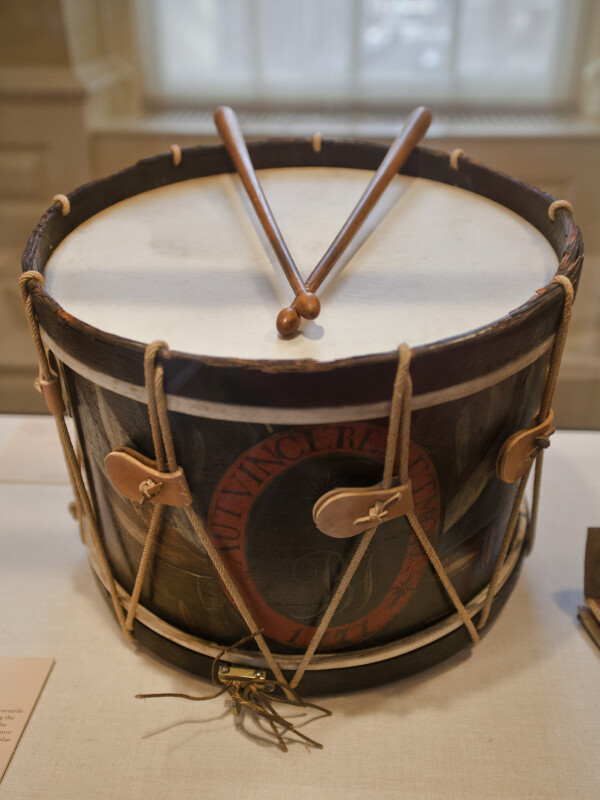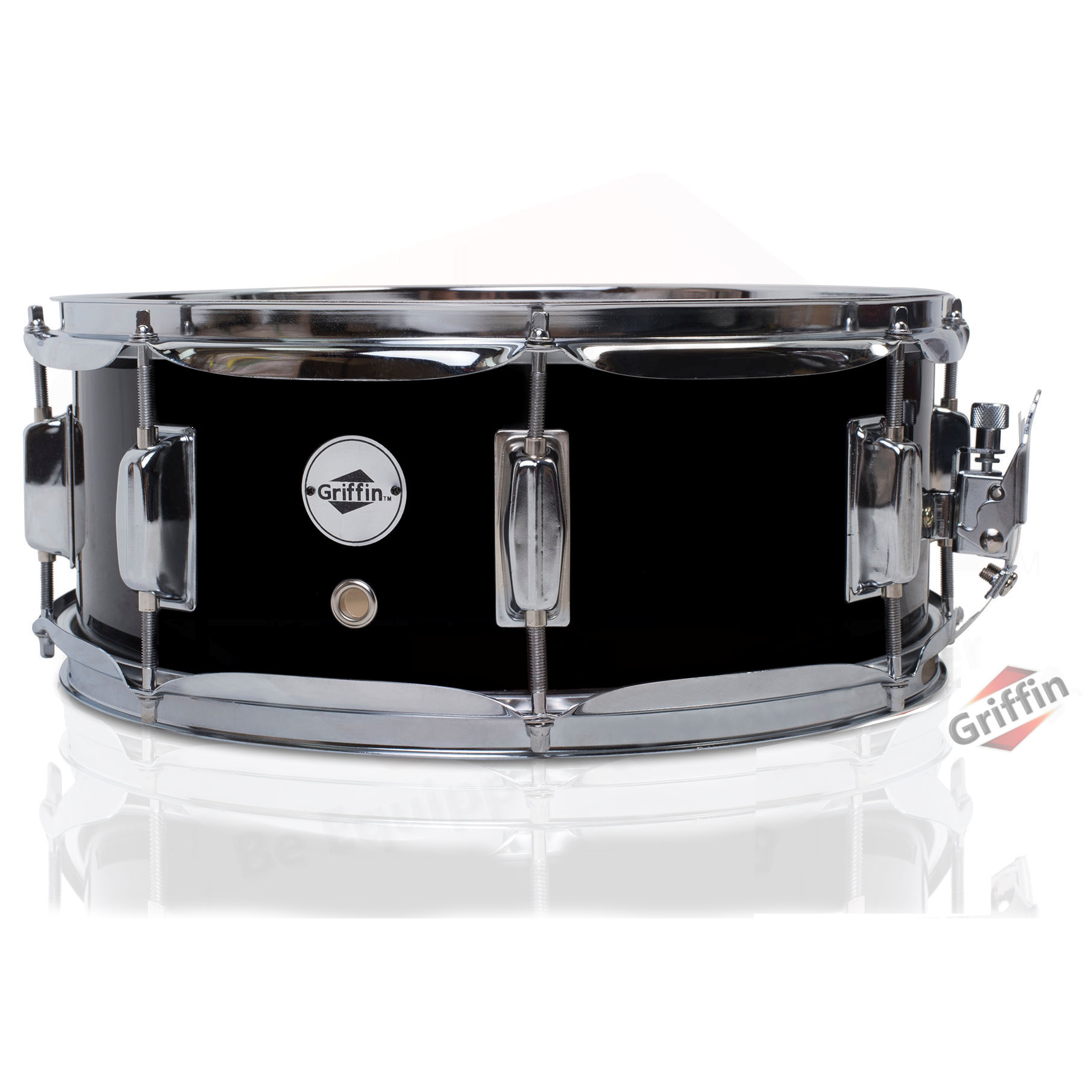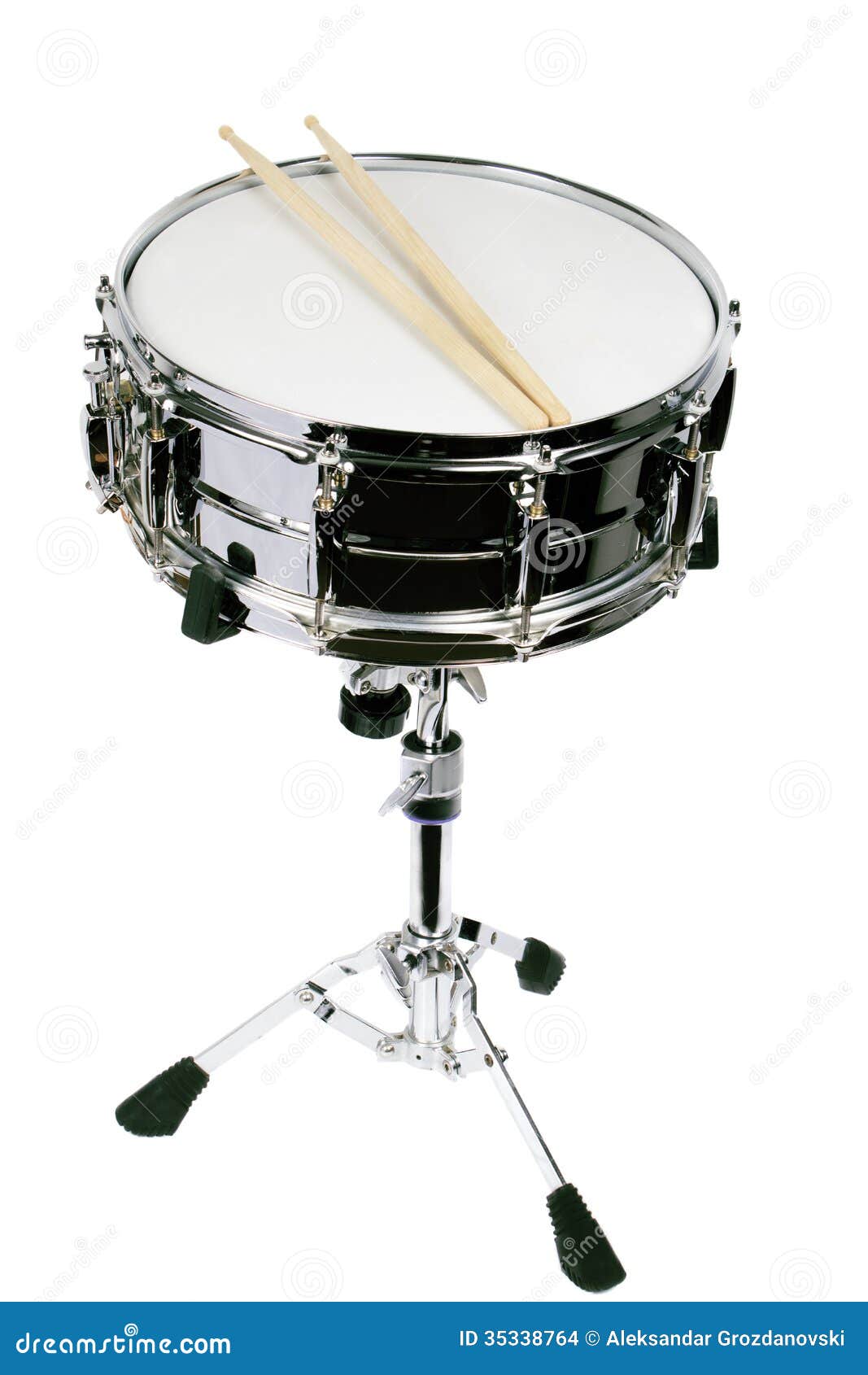 The drum is a known member of the percussion band of musical equipment. Inside the Hornbostel-Sachs classification system, it is just a membranophone.[1] Drums consist of at least one membrane, called a drumhead or drum skin, that is extended over a shell and struck, either directly with the player's hands, or with a drum stick, to produce audio. There is generally a resonance at once the underside of the drum, tuned to a somewhat lower pitch than the very best drumhead typically. Other techniques have been used to cause drums to make sound, such as the thumb roll. Drums will be the world's oldest and most ubiquitous musical instruments, and the basic design has remained unchanged for thousands of years virtually.[1]Drums may separately be performed, with the player using a solo drum, and some drums including the djembe are almost played in this way always. Others are usually played in a couple of several, all played by the main one player, such as bongo timpani and drums. A number of different drums together with cymbals form the basic modern drum kit.
The drum is a known member of the percussion band of musical equipment. Inside the Hornbostel-Sachs classification system, it is just a membranophone.[1] Drums consist of at least one membrane, called a drumhead or drum skin, that is extended over a shell and struck, either directly with the player's hands, or with a drum stick, to produce audio. There is generally a resonance at once the underside of the drum, tuned to a somewhat lower pitch than the very best drumhead typically. Other techniques have been used to cause drums to make sound, such as the thumb roll. Drums will be the world's oldest and most ubiquitous musical instruments, and the basic design has remained unchanged for thousands of years virtually.[1]Drums may separately be performed, with the player using a solo drum, and some drums including the djembe are almost played in this way always. Others are usually played in a couple of several, all played by the main one player, such as bongo timpani and drums. A number of different drums together with cymbals form the basic modern drum kit.The snare drum or side drum is a well known percussion instrument that
 Drums are enjoyed by dazzling with the side usually, or with a couple of sticks. In lots of traditional civilizations, drums have a symbolic function and are being used in spiritual ceremonies. Drums are used in music therapy often, hand drums especially, for their tactile nature and easy use by a multitude of people.[2]In popular jazz and music, "drums" usually refers to a drum package or a set of drums (with some cymbals), and "drummer" to the individual who plays them.Drums bought divine position in places such as Burundi even, where the karyenda was a symbol of the energy of the king.Construction[edit]Drum taken by John Unger, Company B, 40th Regiment New York Veteran Volunteer Infantry Mozart Regiment, 20 december, 1863The shell almost has a circular starting over which the drumhead is extended invariably, but the shape of the remainder of the shell differs widely. Within the western musical custom, the most common condition is a cylinder, although timpani, for example, use bowl-shaped shells.[1] Other designs include a shape design (tar, Bodhr?n), truncated cones (bongo drums, Ashiko), goblet formed (djembe), and joined up with truncated cones (communicating drum).Drums with cylindrical shells can most probably at one end (as is the case with timbales), or can have two drum heads. Single-headed drums typically consist of a skin stretched over an enclosed space, or over one of the ends of an hollow vessel. Drums with two heads covering both ends of a cylindrical shell often have a small gap somewhat halfway between the two heads; the shell forms a resonating chamber for the causing sound. Exceptions include the African slit drum, also called a log drum as it is made from a hollowed-out tree trunk, and the Caribbean metallic drum, created from a steel barrel. Drums with two mind can likewise have a set of wire connections, called snares, kept across the bottom head, top mind, or both heads, the name snare drum hence.[1]
Drums are enjoyed by dazzling with the side usually, or with a couple of sticks. In lots of traditional civilizations, drums have a symbolic function and are being used in spiritual ceremonies. Drums are used in music therapy often, hand drums especially, for their tactile nature and easy use by a multitude of people.[2]In popular jazz and music, "drums" usually refers to a drum package or a set of drums (with some cymbals), and "drummer" to the individual who plays them.Drums bought divine position in places such as Burundi even, where the karyenda was a symbol of the energy of the king.Construction[edit]Drum taken by John Unger, Company B, 40th Regiment New York Veteran Volunteer Infantry Mozart Regiment, 20 december, 1863The shell almost has a circular starting over which the drumhead is extended invariably, but the shape of the remainder of the shell differs widely. Within the western musical custom, the most common condition is a cylinder, although timpani, for example, use bowl-shaped shells.[1] Other designs include a shape design (tar, Bodhr?n), truncated cones (bongo drums, Ashiko), goblet formed (djembe), and joined up with truncated cones (communicating drum).Drums with cylindrical shells can most probably at one end (as is the case with timbales), or can have two drum heads. Single-headed drums typically consist of a skin stretched over an enclosed space, or over one of the ends of an hollow vessel. Drums with two heads covering both ends of a cylindrical shell often have a small gap somewhat halfway between the two heads; the shell forms a resonating chamber for the causing sound. Exceptions include the African slit drum, also called a log drum as it is made from a hollowed-out tree trunk, and the Caribbean metallic drum, created from a steel barrel. Drums with two mind can likewise have a set of wire connections, called snares, kept across the bottom head, top mind, or both heads, the name snare drum hence.[1]The snare drum or side drum is a well known percussion instrument that
 On modern group and orchestral drums, the drumhead is positioned over the starting of the drum, which in turn is placed onto the shell by the "counterhoop" (or "rim"), which is then kept by means of lots of tuning screws called "tension rods" that screw into lugs put evenly surrounding the circumference. The head's anxiety can be modified by loosening or tightening up the rods. Many such drums have six to ten pressure rods. The audio of any drum is determined by many variables--including form, shell size and thickness, shell materials, counterhoop materials, drumhead materials, drumhead stress, drum position, location, and attractive position and speed.[1]
On modern group and orchestral drums, the drumhead is positioned over the starting of the drum, which in turn is placed onto the shell by the "counterhoop" (or "rim"), which is then kept by means of lots of tuning screws called "tension rods" that screw into lugs put evenly surrounding the circumference. The head's anxiety can be modified by loosening or tightening up the rods. Many such drums have six to ten pressure rods. The audio of any drum is determined by many variables--including form, shell size and thickness, shell materials, counterhoop materials, drumhead materials, drumhead stress, drum position, location, and attractive position and speed.[1]Snare Drum Set With Sticks Stock Images Image: 35338764
 To the invention of stress rods previous, drum skins were fastened and tuned by rope systems--as on the Djembe--or pegs and ropes such as on Ewe Drums. These procedures are almost never used today, though sometimes show up on regimental marching music group snare drums.[1] The head of a talking drum, for example, can be temporarily tightened by squeezing the ropes that hook up the top and bottom heads. Similarly, the tabla is tuned by hammering a disc held set up across the drum by ropes stretching from the most notable to bottom head. Orchestral timpani can be tuned to precise pitches by utilizing a foot pedal quickly.Sound of any drum[edit]Several North american Indian-style drums on the market at the National Museum of the North american Indian.Several factors determine the audio a drum produces, including the type, shape and construction of the drum shell, the kind of drum heads it includes, and the tension of these drumheads. Different drum may seem have different uses in music. Take, for example, the present day Tom-tom drum. A jazz drummer might want drums that are high pitched, resonant and tranquil whereas a rock drummer may favor drums that are noisy, low-pitched and dry. Since these drummers want different sounds, their drums in different ways are constructed just a little.The drum head has the most effect about how a drum tones. Each kind of drum brain serves its own musical purpose and has its unique audio. Double-ply drumheads dampen high frequency harmonics because they're heavier and they are suited to heavy learning.[3] Drum heads with a white, textured covering about them muffle the overtones of the drum head slightly, producing a less diverse pitch. Drum mind with central sterling silver or dark dots have a tendency to muffle the overtones even more. And drum heads with perimeter audio rings mostly eliminate overtones (Howie 2005). Some jazz drummers avoid using thick drum mind, preferring sole ply drum mind or drum mind with no muffling
To the invention of stress rods previous, drum skins were fastened and tuned by rope systems--as on the Djembe--or pegs and ropes such as on Ewe Drums. These procedures are almost never used today, though sometimes show up on regimental marching music group snare drums.[1] The head of a talking drum, for example, can be temporarily tightened by squeezing the ropes that hook up the top and bottom heads. Similarly, the tabla is tuned by hammering a disc held set up across the drum by ropes stretching from the most notable to bottom head. Orchestral timpani can be tuned to precise pitches by utilizing a foot pedal quickly.Sound of any drum[edit]Several North american Indian-style drums on the market at the National Museum of the North american Indian.Several factors determine the audio a drum produces, including the type, shape and construction of the drum shell, the kind of drum heads it includes, and the tension of these drumheads. Different drum may seem have different uses in music. Take, for example, the present day Tom-tom drum. A jazz drummer might want drums that are high pitched, resonant and tranquil whereas a rock drummer may favor drums that are noisy, low-pitched and dry. Since these drummers want different sounds, their drums in different ways are constructed just a little.The drum head has the most effect about how a drum tones. Each kind of drum brain serves its own musical purpose and has its unique audio. Double-ply drumheads dampen high frequency harmonics because they're heavier and they are suited to heavy learning.[3] Drum heads with a white, textured covering about them muffle the overtones of the drum head slightly, producing a less diverse pitch. Drum mind with central sterling silver or dark dots have a tendency to muffle the overtones even more. And drum heads with perimeter audio rings mostly eliminate overtones (Howie 2005). Some jazz drummers avoid using thick drum mind, preferring sole ply drum mind or drum mind with no mufflingThe snare drum or side drum is a well known percussion instrument that
 The next biggest factor that affects drum audio is head stress from the shell. When the hoop is positioned around the drum head and shell and tightened down with tension rods, the strain of the head can be fine-tuned. When the strain is increased, the amplitude of the audio is reduced and the rate of recurrence is increased, making the pitch higher and the quantity lower.
The next biggest factor that affects drum audio is head stress from the shell. When the hoop is positioned around the drum head and shell and tightened down with tension rods, the strain of the head can be fine-tuned. When the strain is increased, the amplitude of the audio is reduced and the rate of recurrence is increased, making the pitch higher and the quantity lower.
{ 0 comments... Views All / Send Comment! }
Post a Comment